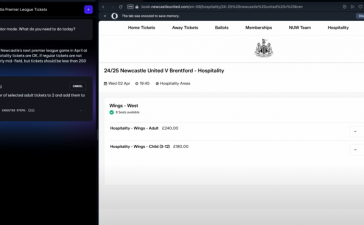
Pain is a relentless companion, an uninvited guest that often overstays its welcome. Whether it’s the throbbing ache of a persistent headache, the searing discomfort of chronic back pain, or the emotional anguish of enduring a traumatic experience, the pain has a way of casting a shadow over our lives.
But what if I told you that there are strategies to break free from this shadow? In this blog post, we’re embarking on a journey toward long-term relief, exploring six powerful strategies that can help you regain control over your physical and emotional well-being. Say goodbye to the shackles of pain, and step into a brighter, pain-free future.
Medication Management
Medication management is a crucial component of long-term pain relief strategies. This approach involves the use of various medications to alleviate pain, reduce inflammation, and improve the overall quality of life for individuals experiencing chronic pain. Non-prescription pain relievers, such as over-the-counter NSAIDs, can be effective for mild to moderate pain.
For more severe or persistent pain, healthcare professionals may prescribe opioid analgesics, muscle relaxants, or anticonvulsant drugs. However, it’s essential to balance the benefits of pain relief with potential risks, such as addiction or side effects. Therefore, close monitoring and communication with a healthcare provider are essential to tailor medication regimens to each patient’s unique needs while minimizing risks.
Use Alternative Pain Relief Products
In the pursuit of long-term pain relief, alternative pain relief products have gained popularity as complementary approaches to traditional medicine. These products encompass a wide range of options, including herbal supplements, topical creams, and devices like TENS (Transcutaneous Electrical Nerve Stimulation) units.
Herbal supplements like turmeric, ginger, or CBD have gained attention for their potential anti-inflammatory and analgesic properties. For instance, you should try THC gummies for pain relief that have proven to be effective. These gummies contain compounds from cannabis that have been associated with pain management.
Topical creams and ointments often contain ingredients like menthol or capsaicin, offering localized relief. Devices like TENS units use electrical impulses to stimulate nerves and reduce pain. While these products can provide relief, it’s crucial to consult with a healthcare professional before use to ensure they align with your specific condition and treatment plan, especially when used alongside other pain management strategies.
Physical Therapy and Rehabilitation
Physical therapy and rehabilitation play pivotal roles in achieving long-term pain relief, particularly for musculoskeletal conditions and injuries. These therapeutic approaches involve personalized exercises, manual techniques, and modalities like heat or cold therapy to improve mobility, strengthen muscles, and reduce pain. Physical therapists work closely with patients to design tailored programs that address the root causes of pain and facilitate healing.
This not only alleviates immediate discomfort but also helps prevent the recurrence of pain. Furthermore, rehabilitation can aid in regaining functionality and enhancing overall well-being, making it an essential component of comprehensive pain management plans, often complementing other treatment methods.
Lifestyle and Behavioral Modifications
Long-term pain relief often requires changes in one’s lifestyle and behaviors. These modifications encompass a spectrum of adjustments, including dietary changes, exercise routines, stress management techniques, and sleep hygiene. Maintaining a balanced diet rich in anti-inflammatory foods can help manage pain, while regular exercise when tailored to individual capabilities, can enhance muscle strength and flexibility.
Stress-reduction practices such as meditation, deep breathing, and mindfulness can alleviate the exacerbation of pain due to stress. Furthermore, improving sleep habits can aid in pain management by supporting the body’s natural healing processes. Implementing these lifestyle and behavioral changes alongside medical treatments can significantly contribute to long-term pain relief and improved overall quality of life.
Interventional Procedures
Interventional procedures are vital options in the pursuit of long-term pain relief, especially when conservative treatments prove inadequate. These minimally invasive or surgical techniques are designed to target the source of pain directly. They may include nerve blocks, epidural injections, radiofrequency ablation, or spinal cord stimulation. Nerve blocks involve injecting anesthetic or anti-inflammatory medication near specific nerves to alleviate pain signals. Epidural injections are commonly used for back or neck pain, delivering medication to the epidural space around the spinal cord.
Radiofrequency ablation uses heat to disrupt nerve signals responsible for pain. Spinal cord stimulation involves implanting a device to modulate pain signals. These procedures can provide significant relief and are often considered when other methods have been less effective. Consultation with a pain specialist is crucial to determine the most suitable interventional procedure for individual needs.
Mind-Body Techniques and Psychological Support

Addressing the psychological aspects of pain is an essential component of achieving long-term relief. Mind-body techniques encompass a range of practices such as mindfulness meditation, cognitive-behavioral therapy (CBT), and relaxation exercises. These methods help individuals manage pain by reducing stress, anxiety, and depression, which can exacerbate physical discomfort. CBT, in particular, aids in changing thought patterns and behaviors related to pain perception.
Psychological support through counseling or support groups provides a platform for individuals to share experiences and coping strategies. By addressing the emotional and mental dimensions of pain, mind-body techniques, and psychological support contribute significantly to improved pain management, enhancing overall well-being and quality of life.
Combining medication management, physical therapy, lifestyle adjustments, interventional procedures, alternative therapies, and psychological support forms a comprehensive strategy for pain relief. These diverse methods not only address pain symptoms but also target their underlying causes, offering a holistic path to relief. By tailoring these approaches to individual needs, individuals can work towards not only mitigating pain but also improving their overall quality of life and well-being, fostering hope for a pain-free future.











